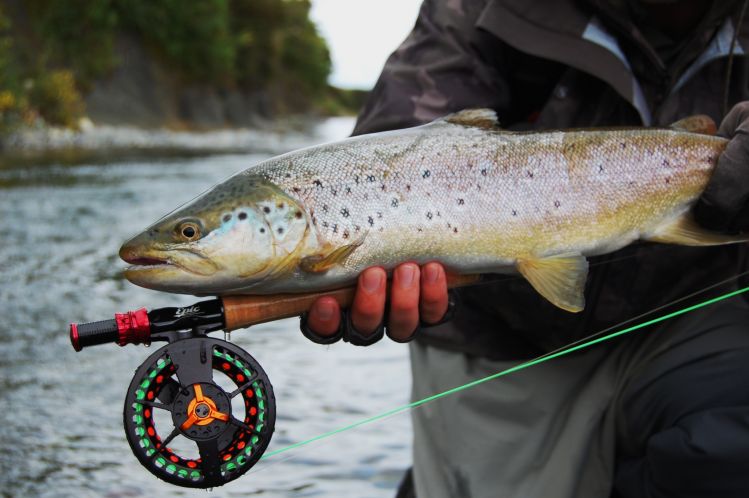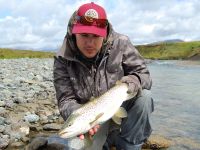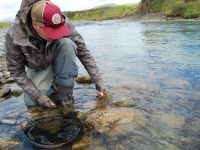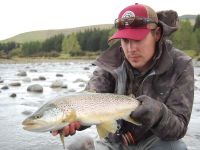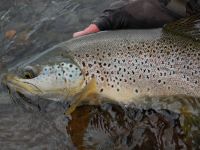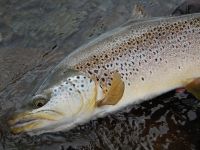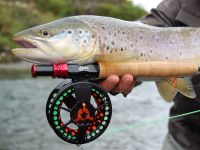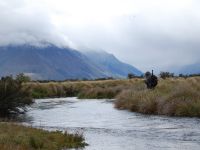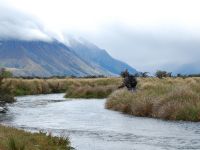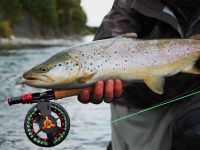November in the South Island of New Zealand ushers in a second opening season following the first in October. From the 1st of the month the remaining rivers, mostly around the lower half of the South Island open, these include all those in the tussock basin that is Mckenzie Country and the ‘Backcountry’ rivers around Queenstown, Wanaka and Te Anau.
To kick off another new beginning I went for n express overnight trip into one of these freshly opened backcountry waters with my mate Dave before he took off overseas. The fishing proved to be tough with the mostly rainbow trout, being very spooky and difficult to deceive. Although we did get into a few fish they were mostly a consolation to a memorable trip into a spectacular valley that lasted only 24 hours!
The ‘backcountry’ View more...November in the South Island of New Zealand ushers in a second opening season following the first in October. From the 1st of the month the remaining rivers, mostly around the lower half of the South Island open, these include all those in the tussock basin that is Mckenzie Country and the ‘Backcountry’ rivers around Queenstown, Wanaka and Te Anau.
To kick off another new beginning I went for n express overnight trip into one of these freshly opened backcountry waters with my mate Dave before he took off overseas. The fishing proved to be tough with the mostly rainbow trout, being very spooky and difficult to deceive. Although we did get into a few fish they were mostly a consolation to a memorable trip into a spectacular valley that lasted only 24 hours!
The ‘backcountry’ rivers that open on November 1st are basically classed as any semi-remote waterway that enters the major lakes in the southern regions, with many of them being well known and heavily fished, especially those surrounding the tourist resort towns of Queenstown and Wanaka.
Unfortunately these rivers no longer provide the quality of fishing seen in past decades, as observed by anglers much older and wiser than myself. They have become some of the most regularly fished rivers in the region and although they may take a little more time and effort to get to, I would no longer consider them of ‘backcountry’ status because it is unlikely there will be a day in the season where they are not fished. I am almost inclined to suggest we refer to them as designated ‘tourist’ fisheries as they receive some of the most foreign and guided angler pressure in the country and require a management approach that reflects this.
On one of these rivers the national authority (Fish & Game) has even gone to the effort of trying to drip feed the angling pressure over the peak season periods by enforcing a exclusive booking system. This means you must book in advance the section of river you wish to fish on a certain date, although free it can prove inconvenient. This is not something I am against and is possibly the foundation of a approach that should be considered for all these sensitive rivers when it comes to non-resident anglers. The notion that non-residents may only fish these waters with a guide is becoming more popular and something I support for the future, not because I am a guide but because I believe in the sustainability of a fishery for all New Zealander’s and one that can provide economic value to our country.
Anyway opinionated rant over, later on in the month I decided to do another road trip, this time to Mckenzie Country, a region that is basically situated at the centre of the South Island. This barren windswept tussock land is reminiscent of the desert in a 1960’s western movie and is surrounded by towering mountains and river carved plateaus. There are several interesting freestone rivers and spring creeks to explore and it is also the location of the famous hydro canals, supporting mutant trout that regularly exceed 30lb, but I won’t go into that.
This was a short trip to visit 3 rivers in total after the others I intended to fish were still too coloured with snow melt and i’d had enough lake fishing over the winter to ensure it was would not be on my agenda for this trip. A nice even mix of browns and rainbow came to the net including one day where all 8 were on the dry, a welcome surprise early in the season. The video below is a quick wrap up, checkout the amazing turquoise water at the beginning, a result of the lake being glacial fed.
Tips for fishing in November
November welcomes in the wonders of spring with wildflowers blooming, baby lambs littering the paddocks and the days becoming longer and warmer. This however does mean that November is one of the main months when snow melt will cause higher, dirtier rivers and tends to turn the water a milky colour inhibiting sight fishing prospects. Some rivers are affected by this worse than others and a recent rainfall/snowfall can immediately enhance the negative effects on such waters.
Here are a few tips to help with getting the best out of fishing in November:
Search for rivers which are not overly effected by snow melt, these include those: that flow out of smaller/shallower valleys, that spawn from lower elevations, that are partially or complelty spring fed.
Target lake tributaries, these will still hold a good stock fish left over from the spawning months and those that have a late opening usually still have a large stock of rainbows hanging around.
Mix up the regions you fish, now that everything is open take some time to travel and explore different areas. Experiencing the diversity of our waterways and landscape is what can make a trip most memorable.
Start experimenting with dry flies, spring brings a whole new cycle of life for most plants and insects so there is usually activity in the air. Most fish I came across were more than happy to suck down a size 12-14 parachute adams.


